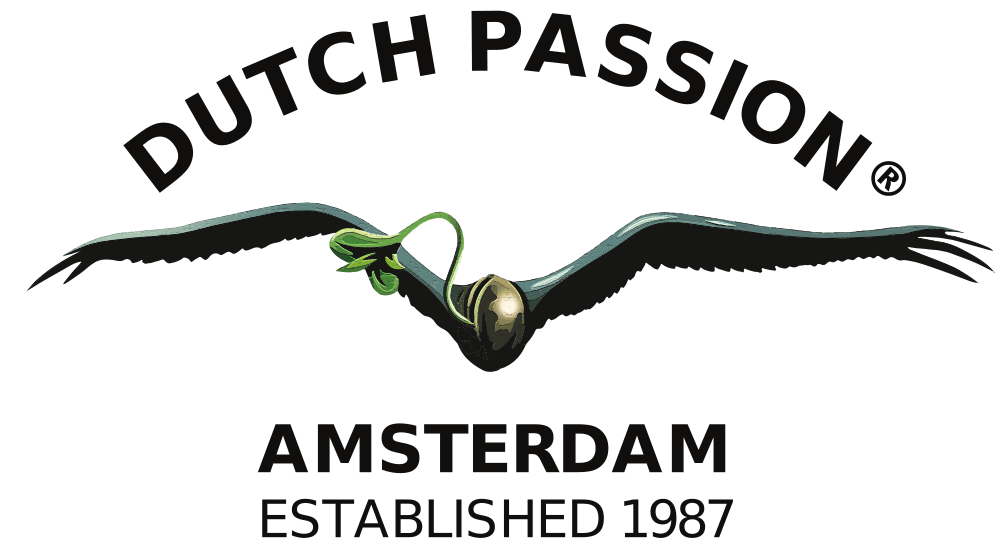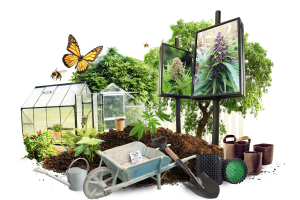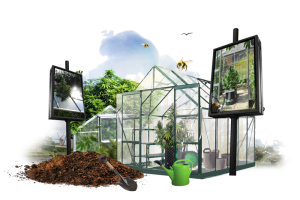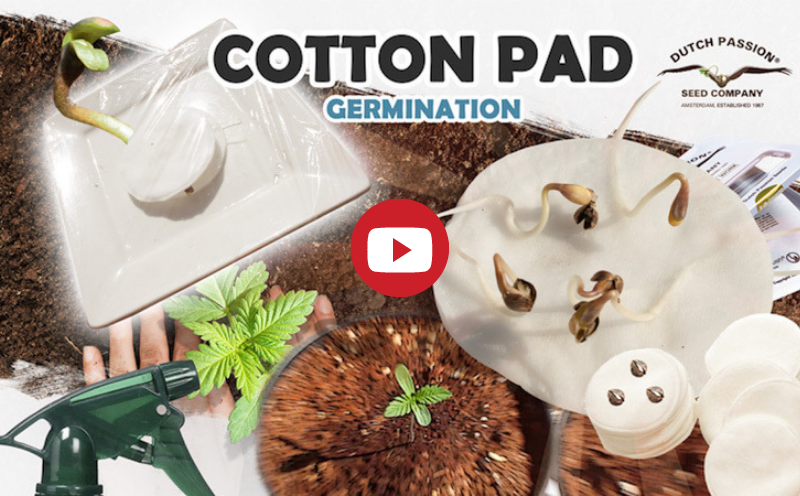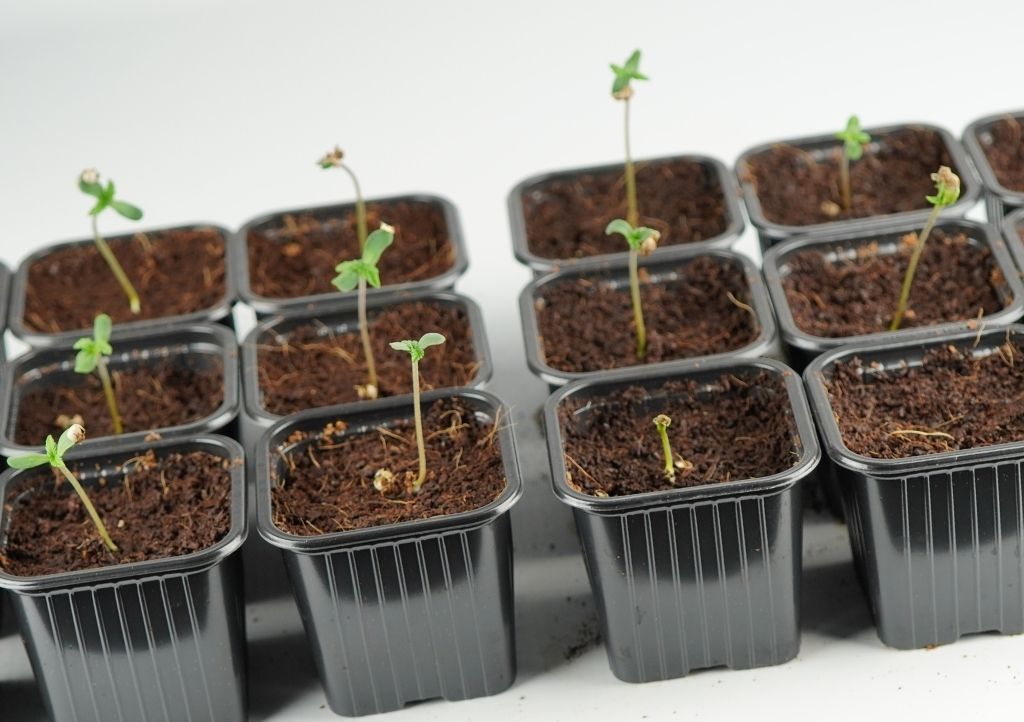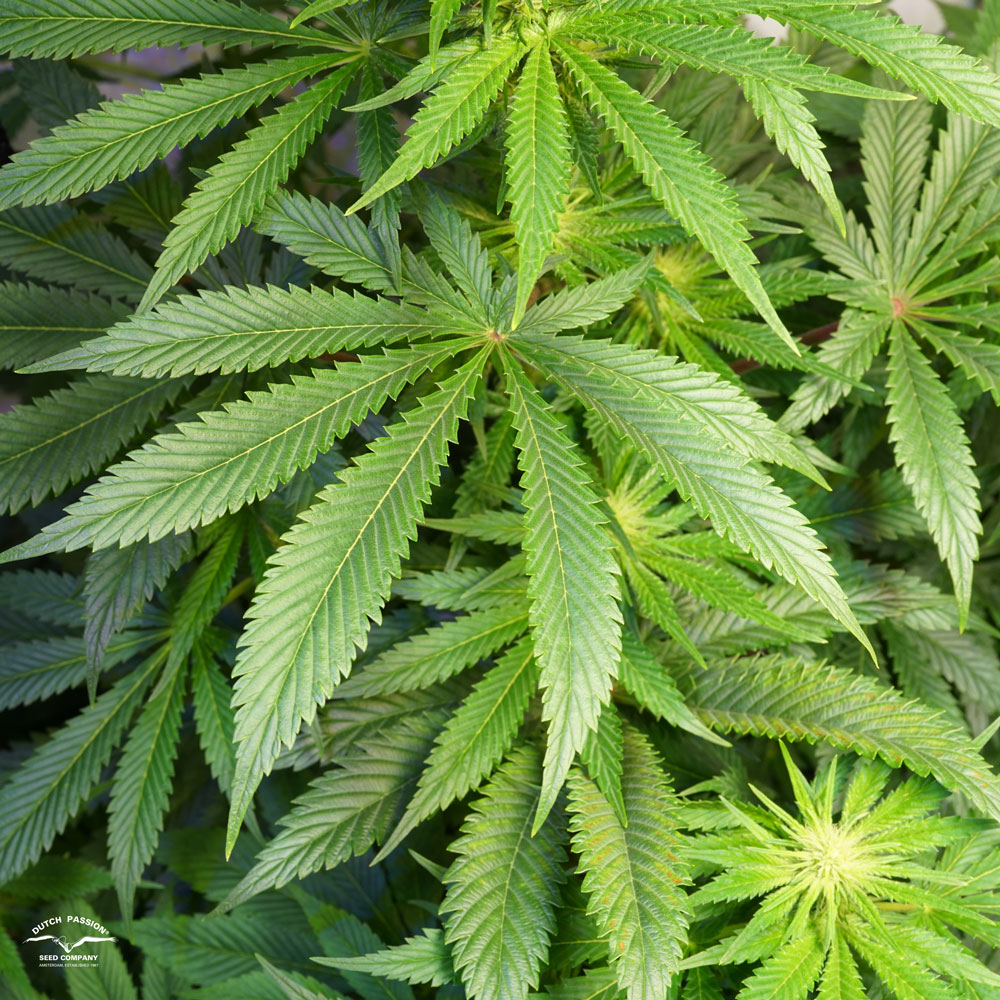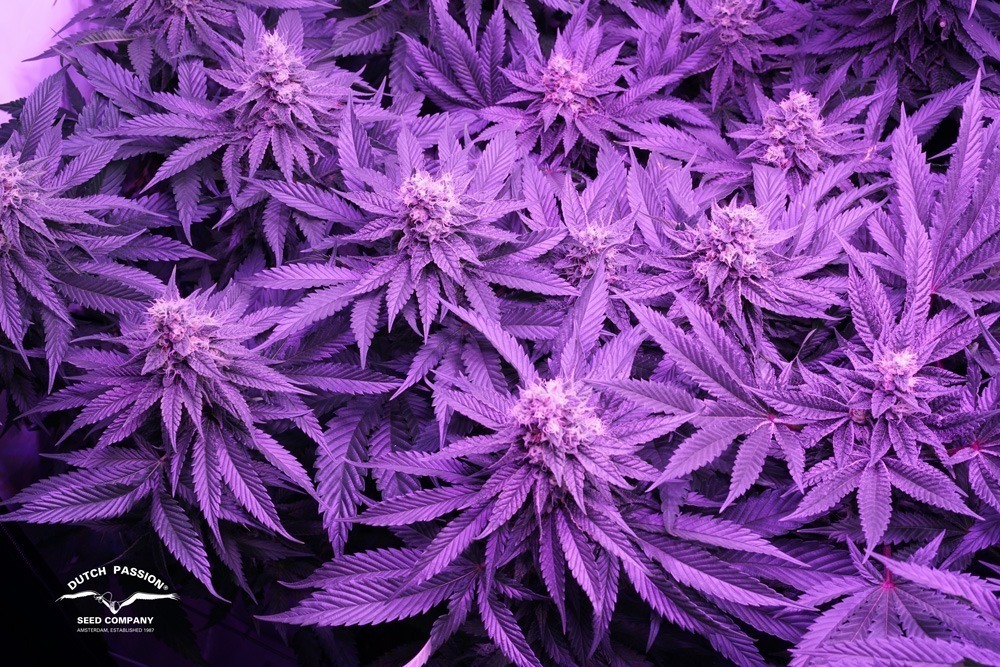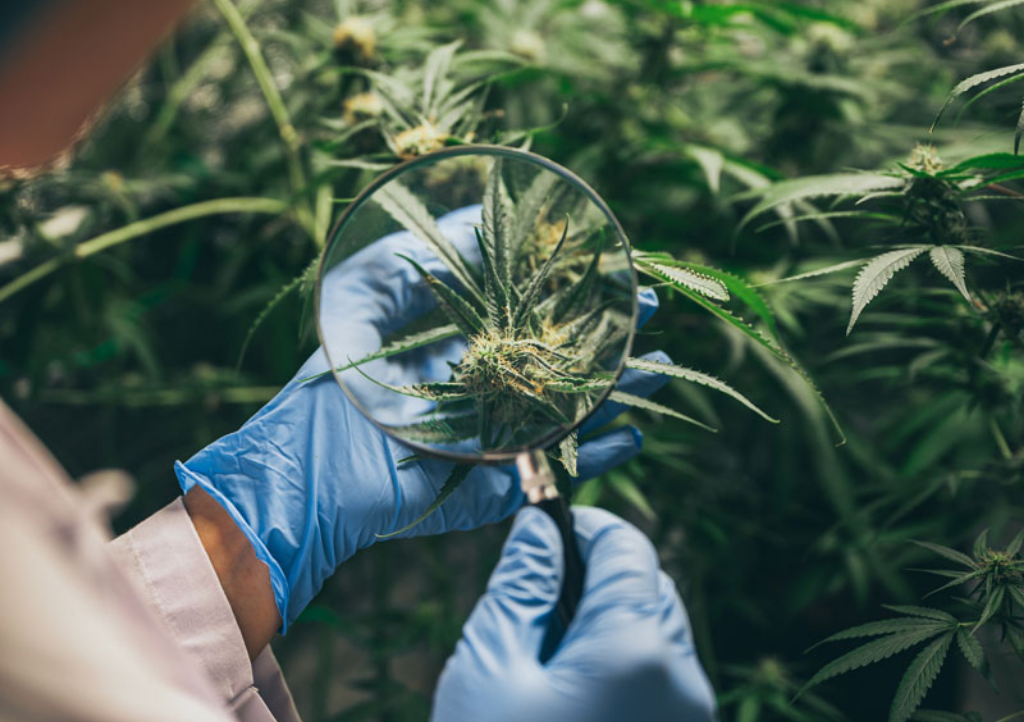Cannabis growing calendar for Northern Europe
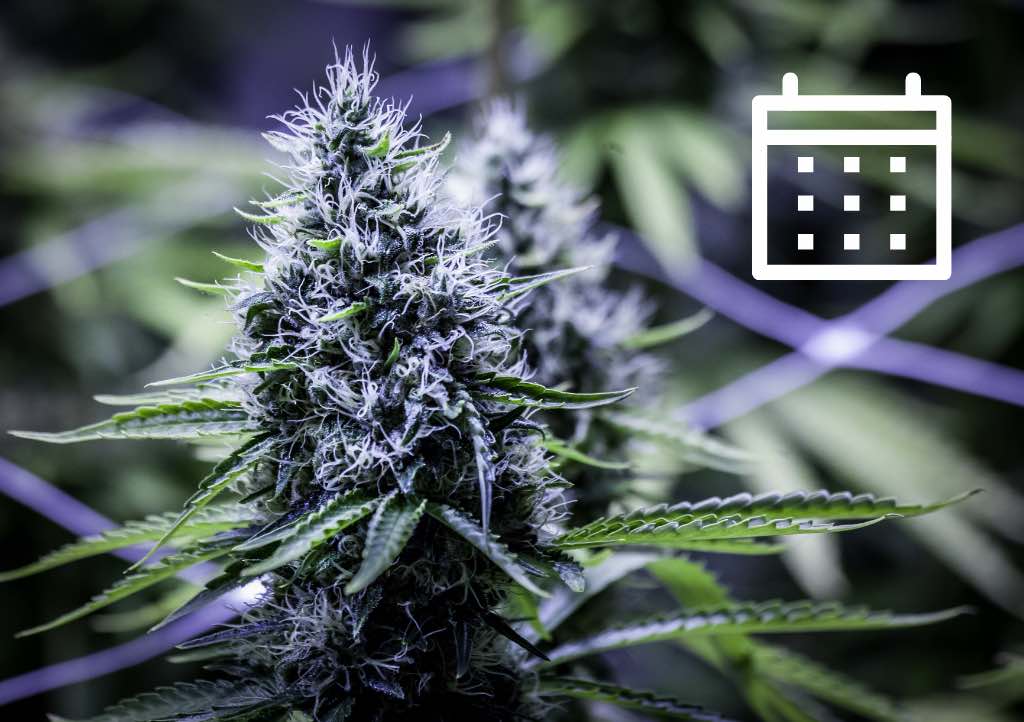
Northern Europe has notoriously unreliable weather from spring to autumn/fall. Summer weather is often cool, damp and grey with a few weeks of increasingly intense heatwaves thrown in. Growing cannabis outdoors in Northern Europe has its challenges. But choose the right outdoor feminised strains and some solid autoflower seeds and you can expect success even in you’re in one of the most northern countries. Our cannabis grow calendar for Northern Europe offers expert tips on a month-by-month basis to maximise your chances of success
The basics of growing cannabis in Northern Europe

The definition of Northern European can vary. Typically Norway, Sweden, Finland and Denmark are typically considered as some of the larger Northern European nations.
But many UK growers might also claim to face similar climatic conditions. So too may those growing in northern areas of mainland Europe, such as northern France, Germany and Benelux.
Your last spring frost may be in May, or even later. Your weather may be noticeably cooler by September and wet/stormy by October. Knowing how long the growing season is at your latitude is important. If you’re not sure it may make sense to focus the bulk of your initial crop on autoflower seeds.
If you can germinate your cannabis seeds indoors and grow them under artificial light (or in a heated greenhouse) until the last frost has passed it will give you a significant advantage. Your seedlings will be larger and stronger when they are eventually acclimatised and planted outdoors. This will allow you to shoot for heavier harvests.
You can plant your cannabis seeds directly into the ground. This can be pre-prepared, dug-over, and enriched with slow release nutrients (e.g. BioTabs), compost, well rotted manure etc. Rooting your plants directly into the ground will ensure you don’t need to manually water them unless there is a severe drought.
Or you can grow your outdoor plants in containers. This infers a more frequent responsibility to feed/water your plants. But it also allows you to move them under shelter (or to a greenhouse) if required for weather or security reasons.
The following article gives a detailed practical guide to growing outdoors in the UK. But the advice also applies to growers in other Northern European countries.
Many outdoor growers buy a selection of proven outdoor feminised seeds, some autoflower seeds and perhaps a fast feminised strain. Few serious outdoor growers take risks with unproven genetics.
Outdoor growing brings challenges with it, outdoor growing in Northern Europe can be brutally difficult unless you have made the right preparations and chosen the right cannabis seeds for the conditions.
Growers often have a few grow locations, allowing them to spread their chances of success across a few sites with a small number of plants at each spot. Often this will be a mix of autos and photoperiods. But for those in the coldest of climates, only autoflowers seeds will have a realistic chance of finishing.
Most suitable cannabis genetics for Northern Europe
Solid outdoor photoperiod feminised cannabis strains tend to be ready around late September or early/middle October. This is often right on the limit for Northern European outdoor growers.
Proven outdoor feminised strains are the result of years of selective growing in outdoor conditions, don’t expect your favourite indoor Haze seeds to finish outdoors. In reality only a minority of feminised strains will survive the demanding northern conditions and still produce a harvest.
Outdoor cannabis grow calendar for Northern Europe
The grow season may be a little bit shorter than many northern growers would like. But some up-front planning and preparations mean that there is often something to be done at various times of the year.
February
- Day length: 9.05 – 10.47 hours
- Average temperature: 2.5 °C
Early in the year is a great time to prepare your outdoor grow locations. You can dig in some well rotted manure, compost, supermarket soil and earth improvers such as lime, bat guano, worm castings, dolomite earth etc. The lack of foliage means it’s also an ideal time to scout for new future grow locations behind the bushes and brambles.
You may also want to cut back any overhanging tree branches or brambles that are getting in the way of your plants (or the sunlight they will soon depend on). Many outdoor growers also deliberately plant thick brambles and thorny plants around the perimeter of their grow area to deter accidental discovery by hikers, dog walkers etc.
Over a few years these can become a formidable natural obstacle and of great benefit when protecting your plants. Some growers create hidden crawl routes into their grow patch to ensure maximum plot security.
March
- Day length: 10.51 – 12.52 hours
- Average temperature: 4.7 °C
Those aiming to grow monster outdoor plants may already have germinated their photoperiod feminised cannabis seeds. With a couple of months of indoor vegetative growing, followed by careful step-by-step outdoor acclimatisation, you can aim to have some well sized plants ready to plant out when the weather has warmed up.
March is another good month to get your walking boots on and improve your grow locations. Many growers use different approach-routes to their locations so that they don’t leave an obvious track. Once at your grow location, you may want to dig over the soil to aerate the ground, remove weeds and any sun-blocking tree branches.
April
- Day length: 12.56 – 14.48 hours
- Average temperature: 8.2 °C
For most Northern European growers April will still be a few frustrating weeks too early to safely put your seedlings and plants outdoors. That can seem especially cruel if a spring heatwave arrives. But late-April snow and frost and not uncommon, even after some early spring warmth has lulled the grower into a false sense of climatic optimism. However, April could be a great time to buy some cannabis seeds online and germinate them. Your photoperiod feminised strains will really benefit from the chance to grow vegetatively indoors.
Those growing autoflower seeds may well wish to germinate them and grow them for a few weeks under 20 hours of daily indoor light. This will give them a solid start and allow optimally sized plants when you plant them outdoors in a few weeks time.
May
- Day length: 14.52 – 16.20 hours
- Average temperature: 12.3 °C
The weather is warming up and the days are lengthening. You are ready to plant your seeds, or seedlings/small plants, outdoors. Some people may have the option to transition them to outdoor life via the greenhouse. Others will trust in the weather, warmth and longer days. In the far north there is still the risk of a May frost.
Your photoperiod outdoor feminised strains will continue to grow vegetatively outdoors in the long days. Your autoflower plants will do their own thing according to the genetics irrespective of the day length.
If you have given them a month of indoor growth then they will probably be ready to head into bloom as soon as they are placed outdoors.
Fans of autoflower seeds, and this includes more outdoor growers than ever, can be regularly germinating and planting autoflower seeds from this point onwards. They need around 3 (to 4) months of outdoor growth.
Many outdoor growers feel that their autoflowers thrive when blooming under mid-summer sun and repay them with bumper harvests. It’s fair to say that autoflower seeds have been genuine game-changers for outdoor growers, especially those in in northern (or extreme southern) climates with short growing seasons and temperate climates.
June
- Day length: 16.22 – 16.38 hours
- Average temperature: 15.2 °C
Summer is in full flow and the days seem to last forever. With 16+ hours of day light your plants should be thriving. The best of the summer heat may still be around the corner. Outdoor guerrilla growers may want to check their site for occasional maintenance and ensure that the cannabis plants are not being overgrown by surrounding wildlife. Your photoperiod feminised strains will be enjoying outdoor veg growth with (hopefully) ideal conditions with long sunny days.
July
- Day length: 16.37 – 15.29 hours
- Average temperature: 16.9 °C
Your autoflowers may be approaching harvest and the organised outdoor grower may already have a second crop of auto seedlings prepared to go into the ground. Outdoor photoperiod feminised strains will be getting ready to start bloom. Your outdoor site may need some weeding and general maintenance.
But it is equally possible that the serious outdoor grower doesn’t need to visit their plants and prefers to avoid leaving an obvious trail to their grow location(s).
In cases of extreme drought some growers may bring water to their plants, perhaps from a nearby stream or water source. Some growers may choose to put a light nutrient top-dressing on their plants, perhaps a light dose of bloom nutrients. However this may not be necessary if the soil quality is already good.
August
- Day length: 15.26 – 13.37 hours
- Average temperature: 16.7 °C
Your feminised plants will be in bloom and many will be considering the imminent harvest of their autoflower plants. In a hot year you may have drought conditions in August, but torrential summer rain is equally likely. Outdoor growing in Northern Europe has a generous level of unpredictability associated with it.
August is often the last month of really warm summer weather and the days are starting to feel noticeably shorter. For some in the extreme northern parts of Europe, any sun/warmth in September is regarded as a bonus.
September
- Day length: 13.34 – 11.39 hours
- Average temperature: 14.2 °C
Your feminised strains will be reaching the end. If you used fast feminised strain, such as Think Fast, you may be able to harvest during September. That may be a month earlier than other feminised strains. If your growing season doesn’t really last much beyond September then ‘Fast Feminised’ strains such as Think Fast are a great choice.
So too are autoflower seeds. Many of those growing much beyond 55º North might regard photoperiod feminised strains as a little too risky for their latitude. If you have borderline conditions for photoperiod feminised outdoor strains then planting a pack (or two) of autoflower seeds outdoors this coming summer could be a wise choice.
October
- Day length: 11.35 – 9.38 hours
- Average temperature: 10 °C
Normally the weather is becoming noticeably cooler. ‘Indian’ summers with weeks of warm October weather are rare. Usually early October is the last chance for the photoperiod feminised strains to ripen.
Feminised strains such as Frisian Dew, Frisian Duck, Passion #1 are often among the fastest finishers. But even these may not be fast enough for some, and for them autoflowers are the only serious choice.
Once the outdoor harvest is complete growers can concentrate on site clean-up. Ensure there are no tools, wire mesh fencing, fertiliser bags or anything else left on-site over winter. The committed outdoor grower may want to return to the site and dig in some fresh manure to boost ground fertility and allow it to rot down over winter.
Best cannabis seeds for outdoor in Northern Europe
With just 5 outdoor strains to recommend, a mix of two autoflowers, two feminised and one fast feminised strain have been selected. If your grow season really is short then the autoflowers (and perhaps Think Fast, a fast feminised strain) might be safer choices. But if you live below 53º-55º North you may fancy your chances with photoperiods Frisian Dew and Durban Poison.
Note that each Spring can be prone to late frosts, and that foul winter weather can arrive in September. Northern European weather is unpredictable to say the least. Even if you can successfully grow photoperiod outdoor strains it can still make a lot of sense to cover your bases and plant some autoflower seeds as well. This ensures you will have full stash jars even if an early autumn (fall) rots the buds on your photoperiod plants.
Think Fast

With recessive autoflower genetics and dominant photoperiod genes, Think Fast is technically referred to as a ‘Fast Feminised’ strain. The recessive autoflower genetics allow Think Fast to complete her photoperiod grow cycle perhaps a month faster than a normal feminised strain.
If you’re growing in a climatically compromised Northern European (or similar) country and find traditional photoperiod outdoor strains finish a few weeks too late for comfort then Think Fast is a perfect solution.
She is often ready to harvest in September (March for southern-hemisphere growers), before the worst of the bad weather arrives. Yields are similar to those from other outdoor photoperiods and quality may well be higher. This is an outdoor strain with frosty, sticky buds that genuinely look indoor grown.
Frisian Dew
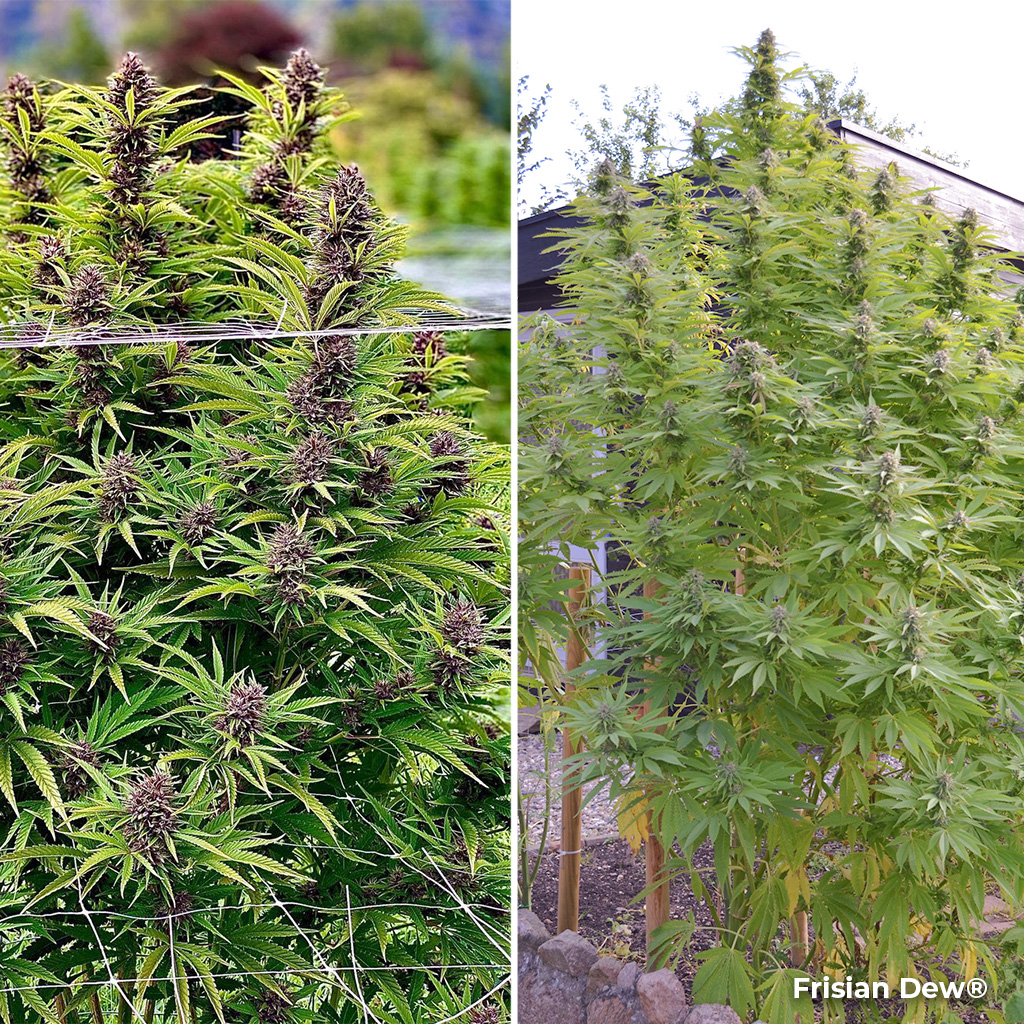
Frisian Dew is Dutch Passion’s outdoor champ. These tough, robust and durable genetics can be relied on in Northern Europe and are usually ready to harvest in early October.
Yields are high and you may enjoy some purple and blue hues in the buds. Frisian Dew was selectively bred in The Netherlands over several years using genetics from Purple Star and Super Skunk.
Each year the best performing offspring were selected and crossed. After many years of professional selective breeding Frisian Dew was ready. Tough enough to grow in Northern England/Southern Scandinavia in dismal summers, she comes with the teams highest recommendations.
Durban Poison

Durban Poison delivers a superb all-round package of heavy yields, extra special taste/aroma and proven potency. Often regarded as a high-quality indoor option, Durban Poison also does very well outdoors.
These South African sativa genetics grow well in demanding conditions and will deliver a crop in conditions where lesser strains would fail.
As with Frisian Dew, Durban Poison is part of the Dutch Outdoor Cannabis Seed Collection. This is home only to the toughest outdoor strains with proven guerrilla grow credentials.
Auto Ultimate

When it comes to heavy yields, few auto strains come anywhere close to Auto Ultimate. She is one of Dutch Passion’s top-tier of exceptional XL yielding plants. These branch-breaking autoflower hybrid genetics can take a little longer than your average autoflower strain.
Allow nearer 4 months from autoflower seed to harvest outdoors rather than the 3 months that you are probably used to. But the wait will be worth it for the spectacular yields. It’s also worth adding that any of the Dutch Passion autoflower seeds are suitable for outdoor growing in Northern Europe. Just select a warm and sunny period and consider buying a couple of extra storage jars for your buds!
Auto Mazar

Auto Mazar is a repeat best selling autoflower seed for buyers in Northern Europe. Her hardy Afghani Kush indica genetics are a good match for the often underwhelming Northern European summer conditions.
Outdoors she often takes around 3 months, perhaps a touch longer, from autoflower seed to harvest. If outdoor auto growers in Scandinavia can repeatedly rely on these tough genetics then so can you!
Auto Mazar is a generous producer of heavily frosted buds. The rich hashy taste is truly delicious. The buds have a pleasingly pungent bouquet and are famously powerful with a blissfully comfortable effect.
Excellent relaxation after a hard day simply doesn’t get much better!


Basic Guides
Popular varieties
- Auto Blackberry Kush ®
- Auto Blueberry ®
- Auto Brooklyn Sunrise ®
- Auto Cinderella Jack ®
- Auto Colorado Cookies ®
- Auto Daiquiri Lime ®
- Auto Duck ®
- Auto Durban Poison
- Auto Euforia ®
- Auto Frisian Dew
- Auto Glueberry O.G. ®
- Auto Lemon Kix ®
- Auto Mazar ®
- Auto Night Queen ®
- Auto Orange Bud ®
- Auto Think Different
- Auto Ultimate ®
- Auto White Widow ®
- Auto Xtreme ®
- Blue Auto Mazar ®
- Blueberry ®
- Brainstorm
- Bubba Island Kush ®
- C-Vibez ®
- CBD Auto White Widow ®
- CBD Charlotte’s Angel ®
- CBD Compassion ®
- CBD Kush ®
- CBD Skunk Haze ®
- Critical Orange Punch ®
- Desfrán ®
- Durban Poison ®
- Euforia ®
- Freddy’s Best ®
- Frisian Dew ®
- Frisian Duck ®
- Glueberry O.G. ®
- HiFi 4G ®
- Hollands Hope ®
- Jorge’s Diamonds #1 ®
- Kerosene Krash ®
- Master Kush
- Mazar ®
- Meringue ®
- Mokum’s Tulip ®
- Night Queen ®
- Orange Bud ®
- Orange Hill Special ®
- Outlaw Amnesia ®
- Pamir Gold ®
- Passion #1®
- Passion Fruit ®
- Power Plant ®
- Purple #1 ®
- Skunk #11 ®
- StarRyder ®
- Strawberry Cough ®
- Sugar Bomb Punch ®
- The Ultimate ®
- Think Big ®
- Think Fast ®
- White Widow
